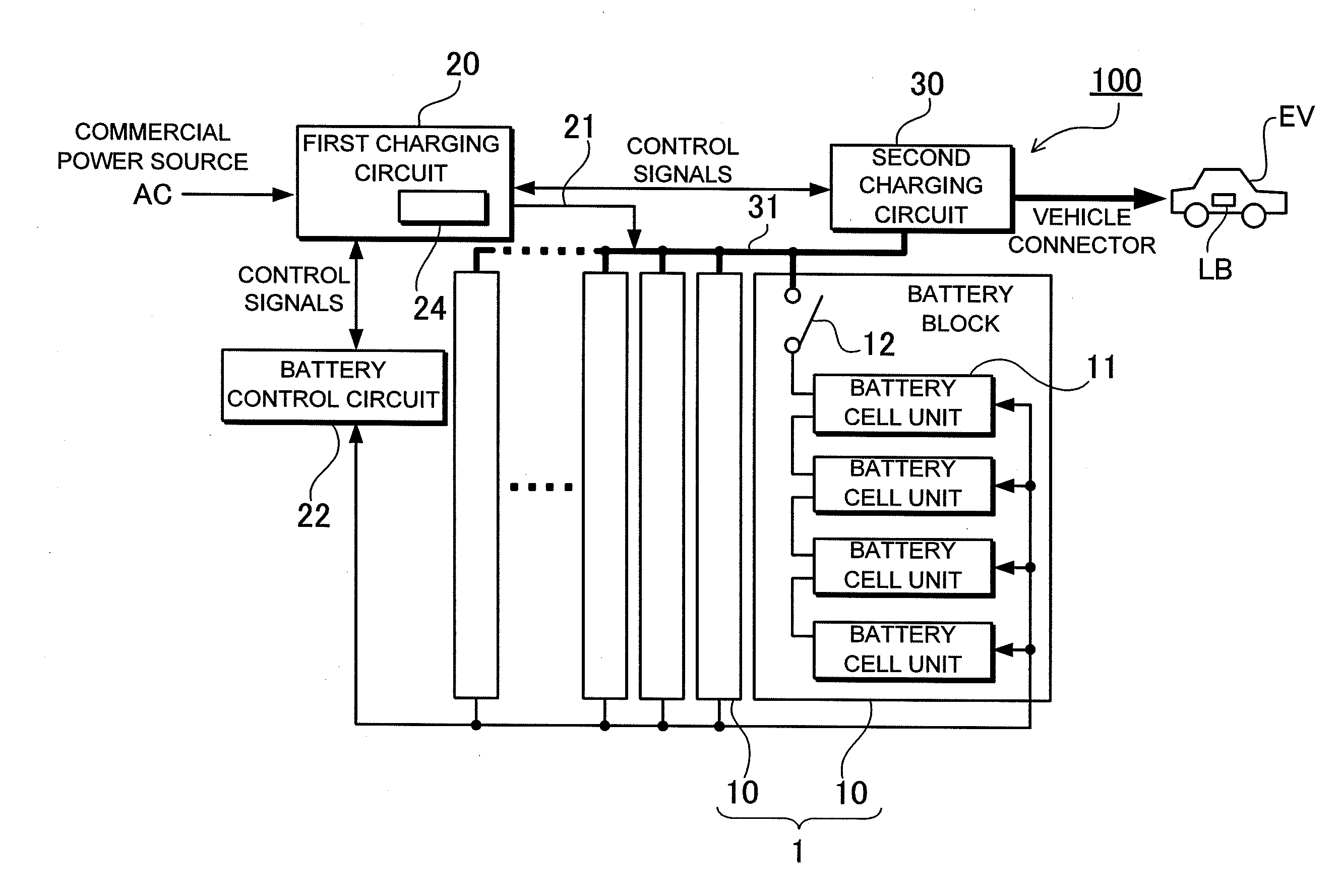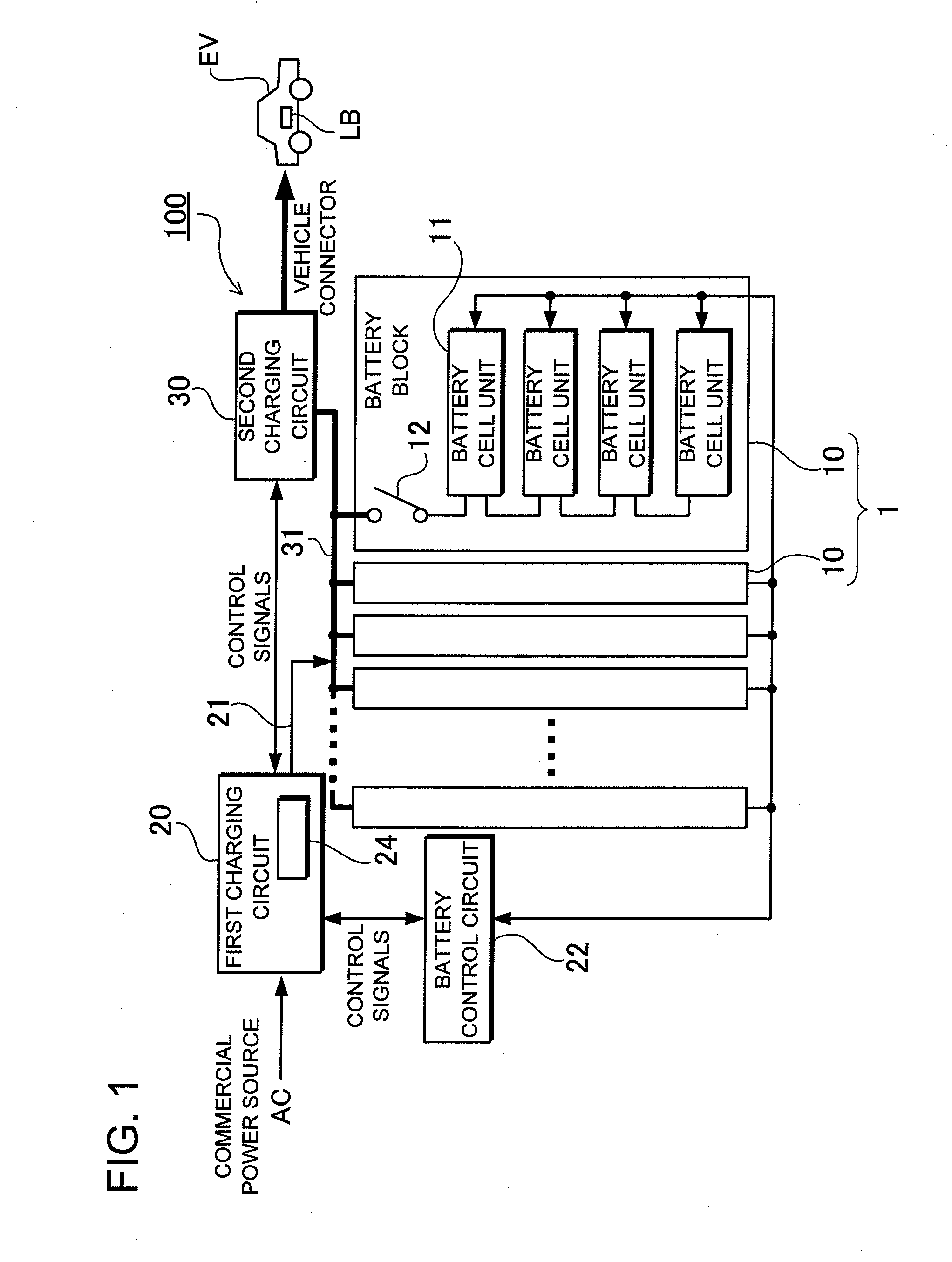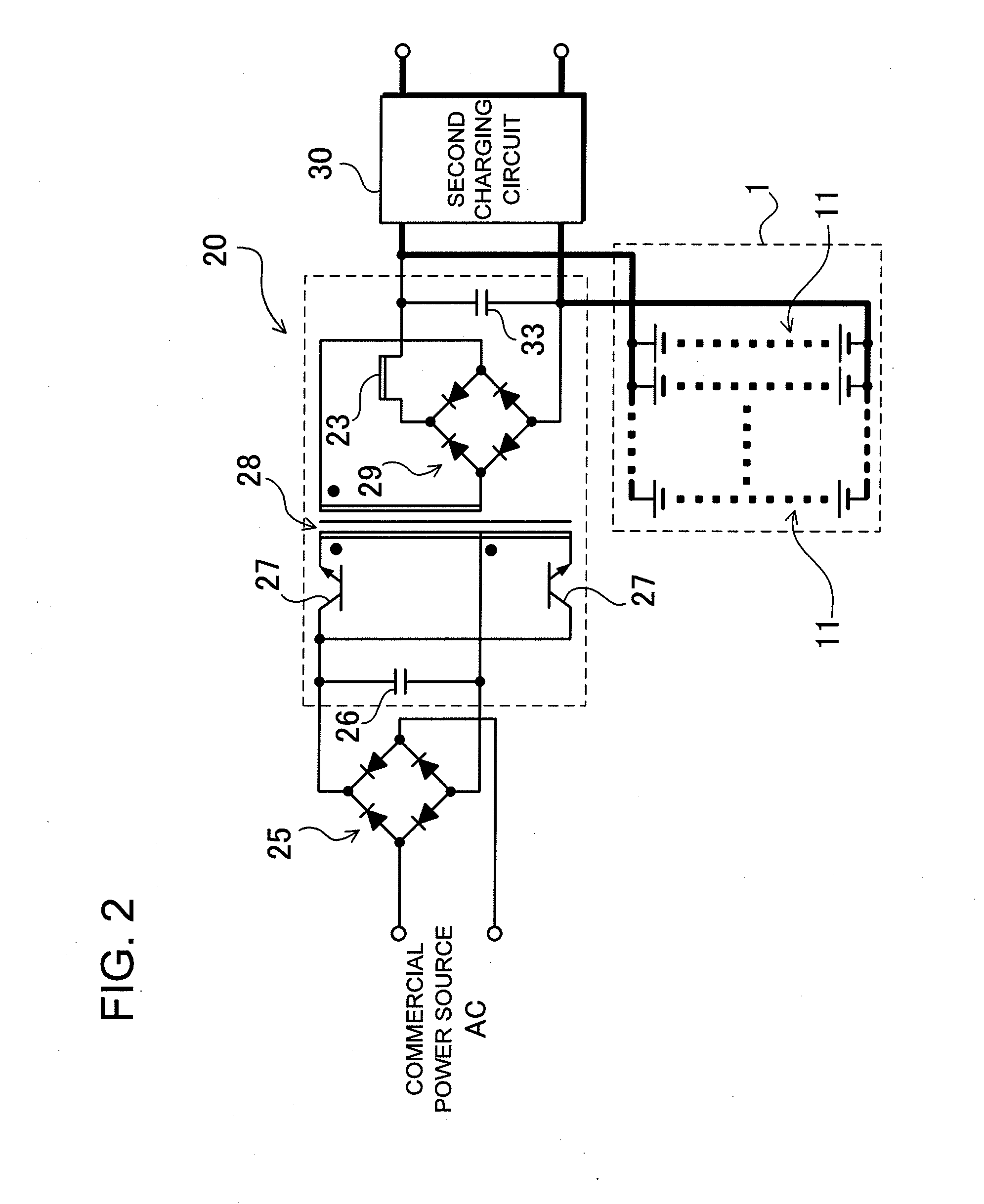Battery charging apparatus
a charging apparatus and battery technology, applied in the field of battery charging apparatus, can solve the problems of large-scale battery charging of high-capacity driving batteries simply using household commercial power, limited maximum power available from commercial power outlets, etc., and achieves rapid charging, short time, and improved reliability.
- Summary
- Abstract
- Description
- Claims
- Application Information
AI Technical Summary
Benefits of technology
Problems solved by technology
Method used
Image
Examples
first embodiment
[0035]FIGS. 1 and 2 show a battery charging apparatus for the first embodiment of the present invention. FIG. 1 is a schematic diagram showing the battery charging apparatus 100, and FIG. 2 is a circuit diagram showing an example of the first charging circuit 20 in FIG. 1. This embodiment illustrates power system architecture that uses commercial power available in the home to charge an auxiliary battery 1, and to charge an externally connected load battery LB. Here, charging of the driving battery in a vehicle EV such as plug-in hybrid vehicle or electric vehicle is described as an example of load battery LB charging. The battery charging apparatus 100 is provided with an auxiliary battery 1, a first charging circuit 20 that charges the auxiliary battery 1 from a commercial power source AC, a second charging circuit 30 that charges the load battery LB with the auxiliary battery 1, and a battery control circuit 22 that controls conditions for auxiliary battery 1 charging by the firs...
second embodiment
[0056]The embodiment above describes a system that uses commercial power as the only source of charging power. However, the present invention is not limited to that configuration and other sources of power can also be used in addition to, or in place of the commercial power source. For example, power generating systems that use renewable energy such as solar cells or fuel cells can be used as power sources. FIG. 3 shows a power source system employing a battery charging apparatus 200 for the second embodiment. In this figure, elements that are essentially the same as those in the first embodiment are labeled the same and their detailed description is omitted. Here, a system is described that combines an auxiliary battery 1 with a household power system, which has solar cells installed to power the household load HL or to sell power back to the electric company. This system makes possible operations that include using solar cell power to charge a load battery LB such as a vehicle dri...
PUM
 Login to View More
Login to View More Abstract
Description
Claims
Application Information
 Login to View More
Login to View More - R&D
- Intellectual Property
- Life Sciences
- Materials
- Tech Scout
- Unparalleled Data Quality
- Higher Quality Content
- 60% Fewer Hallucinations
Browse by: Latest US Patents, China's latest patents, Technical Efficacy Thesaurus, Application Domain, Technology Topic, Popular Technical Reports.
© 2025 PatSnap. All rights reserved.Legal|Privacy policy|Modern Slavery Act Transparency Statement|Sitemap|About US| Contact US: help@patsnap.com



